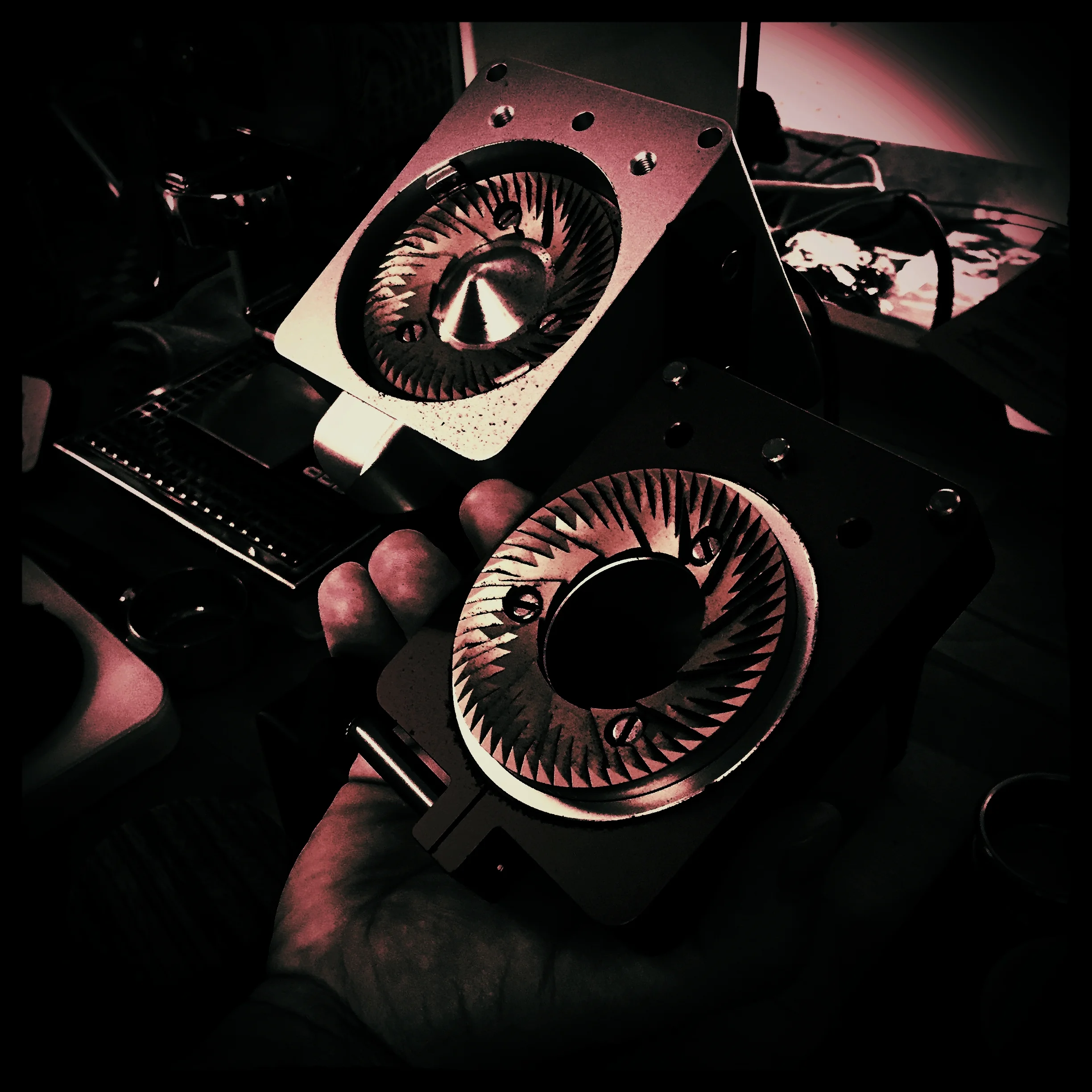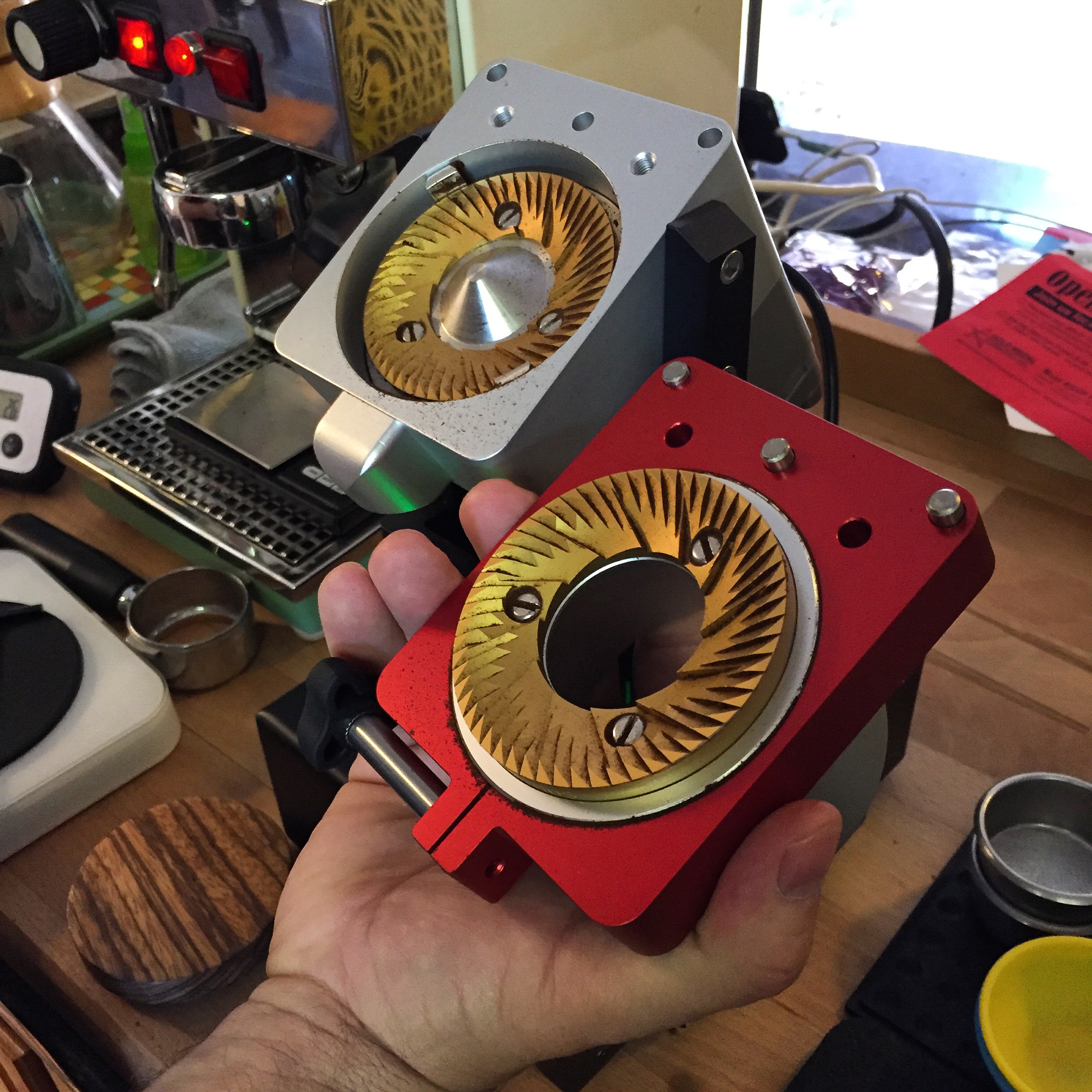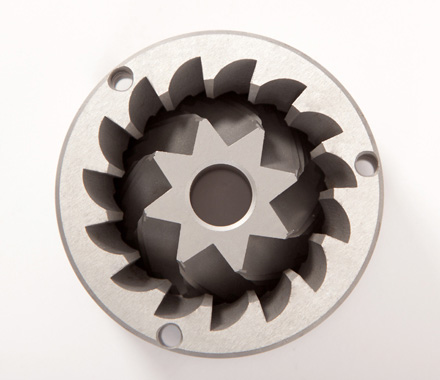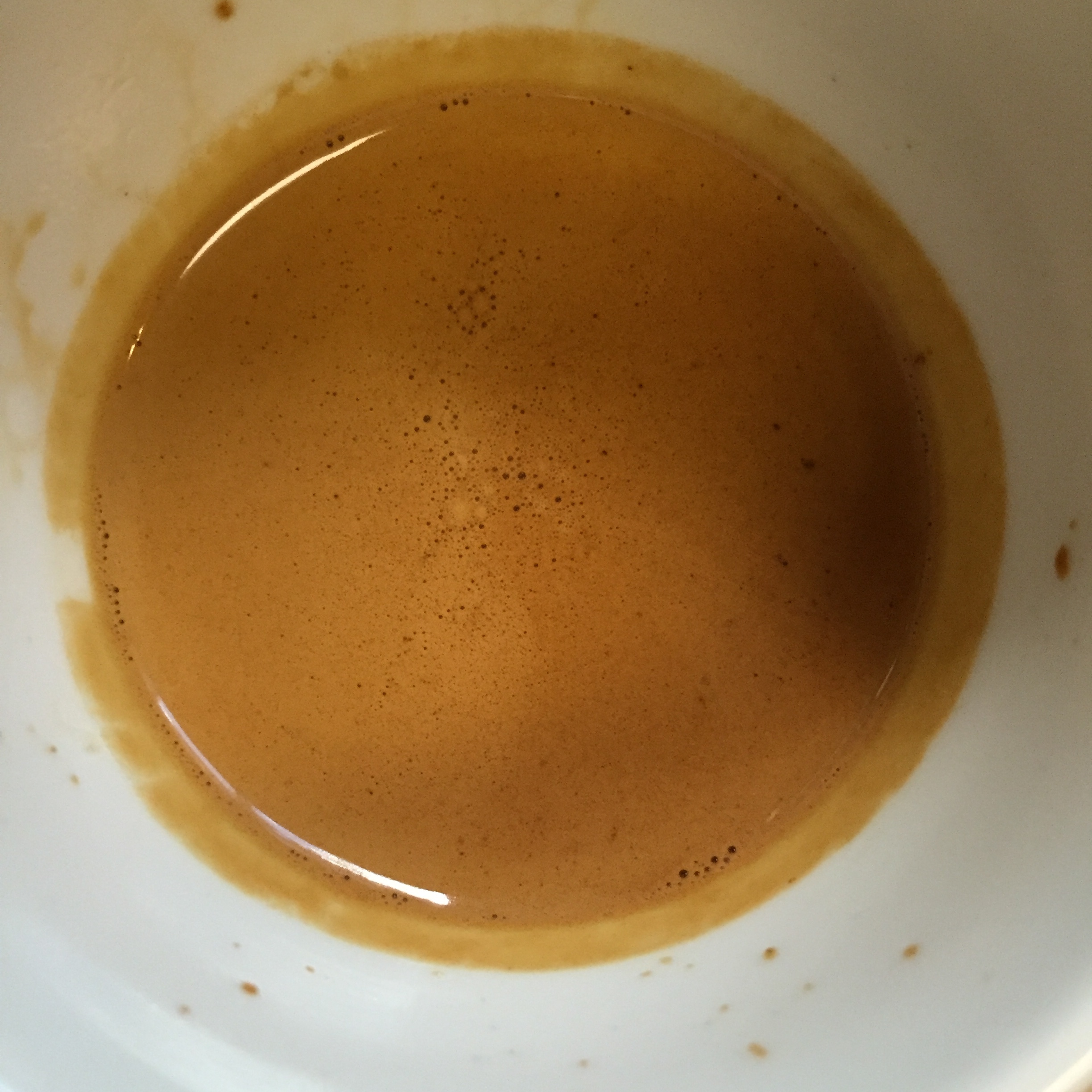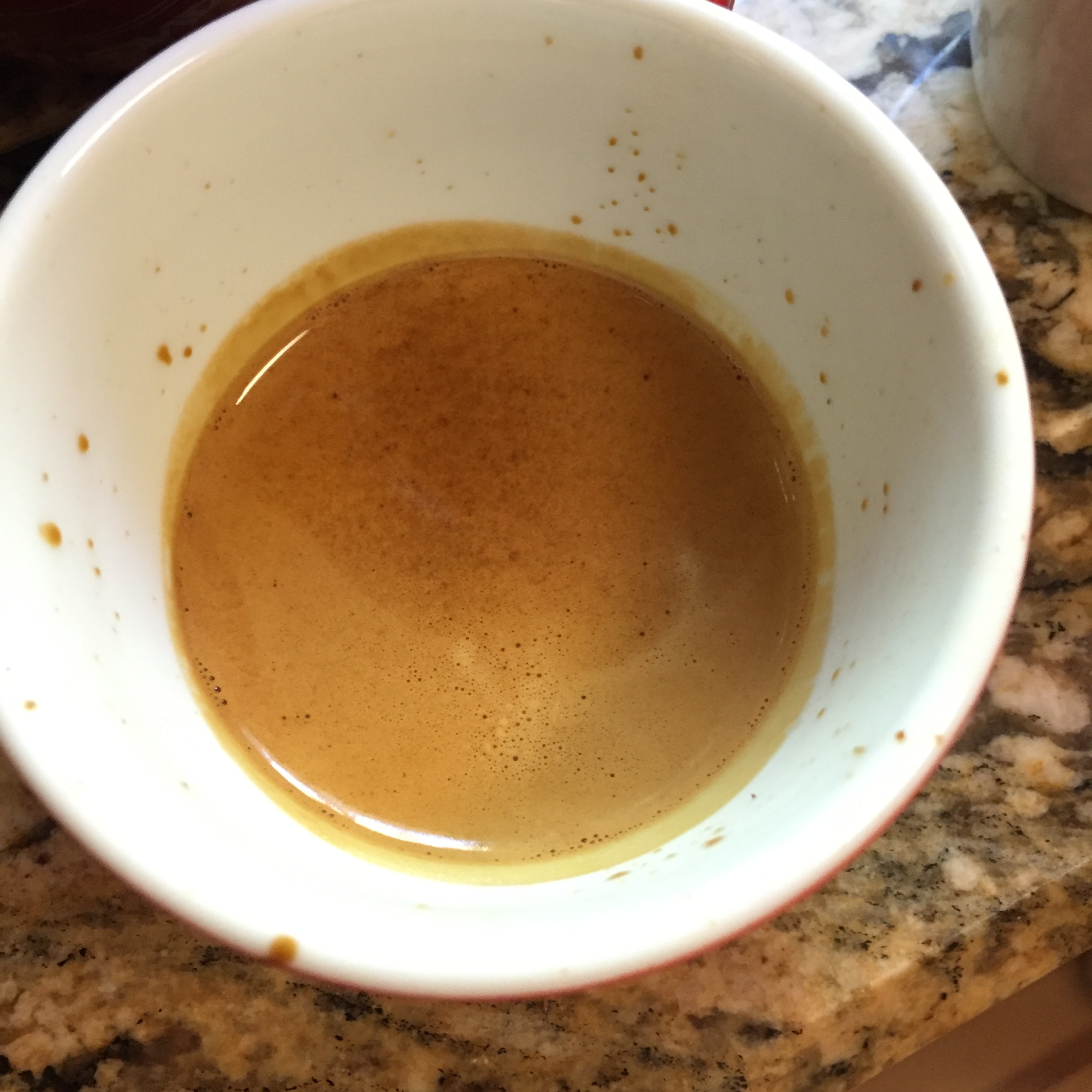Kafatek Monolith Flat and Compak K10 Pro Barista
Just four or five years ago the common deduction was flat burred grinders highlighted the “bass” notes of coffee; chocolates, caramels, nuts, roasty flavors, etc., and that conical burr grinders provided more clarity, brightness, acidity, florals, and fruit flavors. In the context of top tier espresso grinders, commonly referred to as “titan class” grinders, that summation has pretty much reversed entirely as of recent. With an increasing emphasis on pushing extraction levels, lighter roasted coffees, and longer yields to balance those extractions, large flat burr grinders like those from the Mahlkonig line (K30, K30 Peak, EK43) and the Nuova Simonelli Mythos, are said to be providing further levels of clarity, flavor definition, and “brightness”.
So, how would the Monolith Flat, with 75mm Mythos burrs compare with the K10 Pro Barista, a 68mm conical burred grinder that has earned its reputation over the years as providing fruit and clarity? [It is worth noting, that I do believe the flat grinders that were categorized as providing the bass notes in the past were from older designed burrs, like those from a Mazzer Super Jolly or Major; whereas the new wave of flat burred grinders seems to have burrs more closely related to adapted from bulk drip grinders.] A fellow home-barista, Pete, and I set off to compare the burrs via informal semi-blind testing minimizing variables as much as reasonably possible.
We used two different coffees, a washed Ethiopia Kochere from Brandywine Coffee Roasters and Stereo from Heart. I believe both of these coffees represent the collective taste preferences of the two of us, as we both tend to favor brighter, fruit forward coffees, but are not adverse to a well-balanced and not too roasty comfort blend as well. Shots were pulled on my ECM Technika IV Profi at approximately 200*F, using the same 18 gram VST basket. As many shots as needed were pulled from each grinder and each coffee until we felt we had each coffee/grinder setup sufficiently. When blind tasting, shots were pulled from the K10 first due to the longer prep time needed, and were pulled into identical cups, one being discretely marked on the bottom. With both coffees, we handed cups to each other blind, not looking at the crema or appearance, both hot, and cooling, as well as another round where the coffee was left to cool a few minutes and stirred thoroughly. This protocol did not seem to influence results as those remained consistent regardless of when the coffee was tasted and if it was stirred thoroughly or not.
Washed Ethiopia Kochere from Brandywine Coffee Roasters
This coffee was dialed in at a 1:2 ratio of 18 grams in to about 36 grams out in 30 seconds. The coffee required WDT from both grinders to get even picture perfect pours from the VST basket, but once dialed in was really good from both grinders. On blind tasting, we both picked the shots from the K10 as being preferred, as the K10 tended to produce a little heavier body and mouthfeel, and more rounded profile. Fruits were more predominant from the K10, and we even noted that one of the shots even smelled fruitier. It is important to note that both shots were extremely good, and differences though perceivable when tasted back to back were not dramatic – both were excellent espressos. Shots from the Monolith were edgier, with more acidity, and bright notes. The coffee was a bit in your face, and not as juicy-fruit like, but not necessarily in a bad way. Flavor separation was more pronounced versus tasting fruity sweetness. I would speculate that lowering the motor speed and grinding finer could allow you to push the extraction and soften some of that age on the Monolith, but more on that in a future post dedicated to the Monolith. So far the new wave of flat burrs was holding true at providing more acidity and more clarity, but the shots from the K10 were fruitier with a more traditional mouthfeel.
Stereo from Heart Roasters
Stereo used to trend as being very fruity, light, and bright following the Nordic style of coffee roasting. In recent months, this has changed a little, with the coffee becoming a bit more balanced. Their current blend is described as tasting like chocolate, cherry, jasmine, and cola, and is equal parts Ethiopian and Guatemalan. We thought this coffee made for an interesting one as the best shots would highlight the chocolate bass notes as well as the sweeter florals and fruits at the top end. It was easy to identify which shots were from which grinder after learning what we did from the Brandywine trials, as the shots from the Monolith were consistently brighter, with more separation between the layers, and again had a little thinner body. Shots from the K10 were again a bit more rounded, with the edges softened off each layer if you will, with heavier mouthfeel once again. Both shots were really good, but the ability to separate out the chocolate, cherry, and floral notes was much more apparent on the Monolith. For Stereo we dosed 18 grams in to 40-41 grams out in 25-27 seconds.
Burr Comparison Takeaways
The crema was consistently much lighter from the Monolith. We are not sure why that is, but it might have to do with particle size distribution and a lower quantity of fines from the flat burred grinder. Perhaps for the same reasons, the mouthfeel was also lighter or thinner out of the Monolith. Again, not in a bad way, and grind and shot parameters could always be adjusted to manipulate this, but for our testing, the mouthfeel was lighter.
Clarity or Transparency of flavors and layers was increased on the Monolith. I’m not saying this is necessarily good or bad, as this doesn’t necessarily make one coffee taste better than another, but it is a consistent observation.
Brightness, edginess, or acidity is turned up from the large flat. This is very interesting as Denis, the creator of the Monolith Conical and Monolith Flat grinders characterized the flat as being for “acid hounds” to which Pete and I both identified. I’m not sure how else to describe it but we both kept saying shots from the Monolith were edgier while shots from the K10 were more rounded. This kind of goes with the transparency or clarity, but the shots from the Monolith were edgier and less rounded together as whole; the flavors seemed to be more distinctly separated and layered, particularly at the high end. Interestingly enough I think this heavily favors the Monolith when it comes to comfort blends or more Italian style coffees that I sometimes think are too roasty or nutty or dull; the Flat tends to bring out the chocolates, caramels, nuts, and any hint of acidity that might otherwise be hiding. For already acidity or intense coffees, this might make them too intense though.
If I had to pick one based on burrs alone…
Going into this I was starting to bait my wife thinking the Monolith Flat was going to make my grinder seem dull and muted, since I do like bright and acidic espressos. However, based on flavors from the burrs alone, in this session alone, I preferred shots from the conical burrs. The shots from the K10 were sweeter, fruitier, and I think I preferred the thicker body and mouthfeel. I do think we could have potentially manipulated the Monolith Flat to increase the mouthfeel and tame the acidity, but then the recipes would not have been consistent. And to reiterate, both grinders produced great coffee, and if I needed to purchase tomorrow, I’d be hard pressed to choose just the burr types are interesting in their own respective ways. Though, it would be even more interesting to test the Monolith Flat against the Monolith conical…
This burr comparison is part 1 of 3, in discussing two very different single-dosing, titan-level espresso grinders. Keep checking back for my thoughts and observations of using the Monolith grinder as well as an ownership report of my K10.
